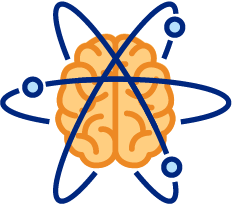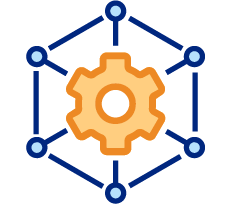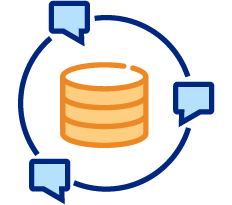Preferred messaging optimization partner for the pharmaceutical industry
Explore What We Do
World-leading expertise in applying decision heuristics science to brand messaging

Deep learning algorithms trained to analyze, predict, and generate messaging

World's largest database of heuristics-based messaging in the pharmaceutical industry


success rate in improving messaging performance for every brand
average improvement in messaging performance
brands gain/widen market leadership with Newristics
pharmaceutical companies use Newristics to optimize their messaging
of small, medium and blockbuster pharmaceutical brands use Newristics
in annual revenue generated by client brands using Newristics

Services designed to HEURISTICIZE marketing content and messaging

Services designed to conduct MARKET RESEARCH related to messaging

Services designed to ANALYZE the effectiveness of messaging using algorithms

Services designed to HEURISTICIZE marketing content and messaging

Services designed to test messaging and to segment customers for messaging

Services designed to analyze the effectiveness of messaging using algorithms

Thank you very much for all of your help in this initiative on the brand. This was our first time partnering with Newristics but I can confidently say that our team was very pleased with the results and the level of support you provided. Looking forward to future partnerships.

The research that we have done with Newristics went like fire around the globe! I had so many calls, including from the clinical team to understand more about it and to see how it could be used more broadly. Amazing result - so many thanks!

I've used Newristics in another life, and they are great. They provide better alternatives to what we say and how we say it to make them compelling and lead to the desired outcomes we are looking for in our marketing efforts.

I've used Newristics before and will continue to use them. Their process and messages are really great. They are great at what they do. Also, their 5-day turnaround is real.

Our project manager at Newristics is a rock star. We need to keep her on our account for any future work. She brings insights past the numbers and that's what we like most in a vendor.

This is so awesome by the way! Thank you…. You guys just saved us so much time on the message refresh, I can’t even tell you how awesome this is.

The ability to increase your message testing to such a significant amount is tremendous. The ad agency and marketing had a difficult relationship, but using Newristics helped alleviate the tension due to their output and efficient timelines.
The best behavioral science educational resource for pharma teams.
Explore






Largest staff trained on heuristics science applied to pharma messaging
Outperformed Nobel prize winning behavioral economist in applying heuristics to messaging
Discovered more new-to-the-world heuristics and biases than any single entity
World's largest database of 660+ decision heuristics and biases, supported by 10,000s of scientific research papers
World's largest database of more than quarter million heuristics-based pharma messages
World's largest database of >5 million data points from pharma message testing studies
Only algorithm to simulate the dominant decision heuristics for any disease state
Only algorithm to predict the appeal of a brand message without testing
Only algorithm to analyze the effectiveness of a brand's messaging vs. competitors
Learn how you can take your messaging to the next level with the power of behavioral science and AI.

We have a list of frequently asked questions for you
Messaging is the essence of a brand’s communication strategy, and all successful pharmaceutical brands put a lot of effort into optimizing their messaging campaigns. Messaging optimization requires delivering:
Pharmaceutical brand teams need messaging optimization to make sure they are getting the highest ROI on their marketing spend. Messaging campaigns account for the biggest share of marketing budgets for a drug, and the difference between a good vs. great messaging campaign can be worth $10s of millions in lost revenue or unproductive media spend.
Messaging optimization requires the use of advanced messaging science, algorithms, and databases in addition to the conventional “creativity-driven” approach.
Messaging optimization is at the core of every effective pharmaceutical marketing strategy. Whether it’s undertaking new drug launches or refreshing messaging for established drugs, pharma companies need to message to many customer stakeholders, communicate complex medical information, and even change treatment behaviors with messaging.
The complexity of messaging in the pharmaceutical industry is amplified by the fact that all pharma brands have unbranded/educational and branded/promotional messaging, which is very unique to the industry. Additionally, being a heavily regulated industry, pharma companies must navigate a number of strict HIPAA regulations and FDA laws, ensuring that all messaging abides by these limitations.
Here are reasons why message optimization for the pharma industry is important, and how innovation can make it better.
Bringing carefully optimized messaging campaigns to market is not easy and requires perfection along every step of the messaging cycle, from insights to action.
Latest innovation in behavioral science and AI has the potential to transform how pharma brand teams can test messaging in market research and identify the optimal message bundles and storyflow for each customer segment and channel out of billions of possibilities.
Innovation in market research can improve the testing of messages and identification of optimal message bundles and storyflow to improve campaign readiness.
In the past, pharmaceutical communication was mostly driven by creatives. However, as advances in artificial intelligence (AI), Machine Learning (ML) and data analytics continue in 2023, the creative-driven or one-size-fits-all approach alone isn’t enough to win in the market. Pharma marketers look beyond these traditional methods to optimize their messaging and actively engage with physicians, patients and payers. Harnessing the power of advanced messaging science, algorithms and databases can help marketers influence these segments and “nudge” their decisions towards the brand.
Specializing in pharma messaging science and algorithms, Newristics has created the Ultimate Pharma Messaging Guide with 20 guiding principles that have been scientifically proven to turbocharge pharma messaging. Access it here!
Unlike many other industries that can test and optimize messages in-market using A/B testing, the pharmaceutical industry typically tests messages prior to market launch using market research techniques. Marketing research plays a very important role in helping pharmaceutical brands optimize their messages before they are launched in campaigns. Using a combination of qualitative and quantitative healthcare marketing research techniques, pharmaceutical brands test messages with physicians, patients and payers on a regular basis, often in multiple rounds of testing.
Innovations in market research are transforming how messages are optimized in the pharmaceutical industry. Some of them include:
In an Intellus-sponsored webinar, NEWRISTICS shared how an innovative approach to message testing that combines the power of behavioral science and artificial intelligence can improve the effectiveness of messaging for drug launches. Watch it here!
Individuals do not necessarily rely on complex processes to arrive at decisions. Rather, they often use decision shortcuts or “heuristics” to help them choose one option over the other. Heuristics-based messaging leverages this predisposition of the human mind to nudge customers towards making purchase decisions.
Talking to the dominant heuristics of the customer can make all brand communications significantly more persuasive and heuristics-based messaging does exactly that to increase the appeal of brand communications.
In the ever-evolving landscape of the pharma industry, marketers actively look for ways to optimize their brand communications and make their messaging more effective and efficient at the same time. Decision heuristics science can help to better understand and influence the decisions of different target segments by HEURISTICIZING messages.
If commercial teams can segment different groups of customers based on how they use heuristics to make decisions, they can deliver highly effective, customized messaging to each segment. Attaching decision heuristics to segments can provide strong hypotheses for WHY they behave the way they do. This information can then be used to develop messaging that is more effective in converting or changing their behavior. Moreover, pharma brands can develop segment-based messaging and train sales reps to personalize messages in personal promotions.
Behavioral science is a field of research focused on how humans make decisions and why they behave the way they do. Behavioral science-based messaging speaks to the dominant heuristics of the target customer with the aim of influencing choices and getting the highest degree of message acceptance.
HCPs, patients and payers can be segmented into different groups based on their behaviors and decision-making processes. Decision heuristics science can be used to each segment’s behavior and nudge their decisions using heuristics-based messaging.
Historically, pharmaceutical marketers have segmented HCPs and patients using variables like behaviors, attitudes, demographics, psychographics. Latest advances in segmentation include use of decision heuristics and biases to group customers based on how they make decisions differently.
By figuring out how customers use mental shortcuts to make decisions, pharma marketers can categorize the customer segments based on their unique decision heuristics.
Identifying the Top 3-5 decision heuristics of each segment can simplify the development of customized messages for them. Every heuristic has a finite set of words and phrases associated with it and writing messages to each segment’s heuristics is easier that writing to their attitudes.
Some decision heuristics are so dominant in a disease state that they can be considered as cross-segment heuristics and can be used to create cross-segment messages.
Experimentation is the key to continuous optimization of messaging campaigns but it's not always easy to execute. In the personal promotion channel, it's nearly impossible to implement experimentation with hundreds or thousands of reps, making experimentation a challenge. But in digital and non-personal promotion channels, experimentation is not only easy, it's important if you want to see real results. Using heuristics to set up your experiments take learning to a whole new level and optimize the delivery of pharma messaging.
Many pharma marketers want to leverage Behavioral Science-based messaging, but don’t know how to. Newristics' Heuristic Science Institute is the world’s most comprehensive resource on behavioral science built just for commercial pharma teams. Access more than 100 decision heuristics and biases explained in plain English, with real-world examples from dozens of disease states and heuristics-based pharma messaging examples.
Designed by practitioners (not professors) of behavioral science, HSI is built exclusively for pharma commercial teams. Check out HSI now!
100% of pharma brands have a customer segmentation, but less than 20% of them are currently able to translate it into segment-based messaging.
Why? Because most pharma brands are missing a key ingredient that is essential to activate segment-based messaging: DECISION HEURISTICS.
Decision heuristics science offers a different model for segmenting customers and converting segments into segment-based messaging. It can serve as a unifying tool that easily brings together all the stakeholders involved in activating customer segments with personalized messaging.
Segmenting customers on the basis of heuristics helps explain the hidden drivers of their decision making, which help everyone working on the brand. Having the top 3-5 decision heuristics of each segment makes it easy to create heuristics-based messaging for pharma. Even, identifying cross-segment heuristics that apply to all or multiple segments can help create cross-segment messaging.
In a recent webinar sponsored by Intellus, NEWRISTICS outlines the barriers pharma brands face in bridging the gap between customer segmentation and segment-based messaging. In this webinar
20 years ago, brands with better reps won the messaging battle in pharma. Today, the messaging battle is OMNI-CHANNEL, and brands with better alignment and field and digital channels are winning.
As the pharma promotional model becomes increasingly omni-channel, messaging science and algorithms are playing a bigger role in optimizing campaigns than creative.
Harnessing behavioral science-based message optimization and AI can help pharma brands to optimize omnichannel performance and maximize the impact of non-personal promotions.
In this webinar, Newristics shares the latest developments in omni-channel marketing and provides recommendations to use behavioral science-based message optimization to get more performance out of non-personal promotion channels.
AI applications are gaining traction in almost every field imaginable and message optimization is no different. AI-based message optimization services are utilizing AI to rework marketing messages to deliver campaigns that promise better email open rates, conversion rates, CTRs, and overall increase the ROI on marketing dollars. Such AI-based message optimization services leverage their databases of millions of messages to create messaging that resonates with the intended target audience.
The advancements in AI can help transform how data from message testing surveys is used to drive campaigns.
This Newristics infographic demystifies the complex landscape of how AI is being used in market research, making it easier for marketing and insights professionals to get up to speed on AI. From low-hanging applications of AI like NLP for coding of open-ends and sentiment analysis to the most advanced applications like training models to replace primary market research altogether, this infographic will quickly bring you up to speed on all relevant use cases of AI in market research. Access it here!
Typically, pharma brands update their messaging every 12 months, but marketing teams often lack new clinical data or customer insights to refresh their messaging. Even if there is nothing new to say creatively, messaging AI can provide a quicker, more cost-effective, and improved way to refresh pharma messaging.
In our recent whitepaper, you can learn about the latest developments in AI that can help streamline the message refresh process for your brand. Explained in non-technical terms, the whitepaper describes different kinds of AI for messaging applications and explains how to use it. Learn from a real-world case study of how a $1 billion brand implemented a message refresh in just 12 weeks by leveraging AI.